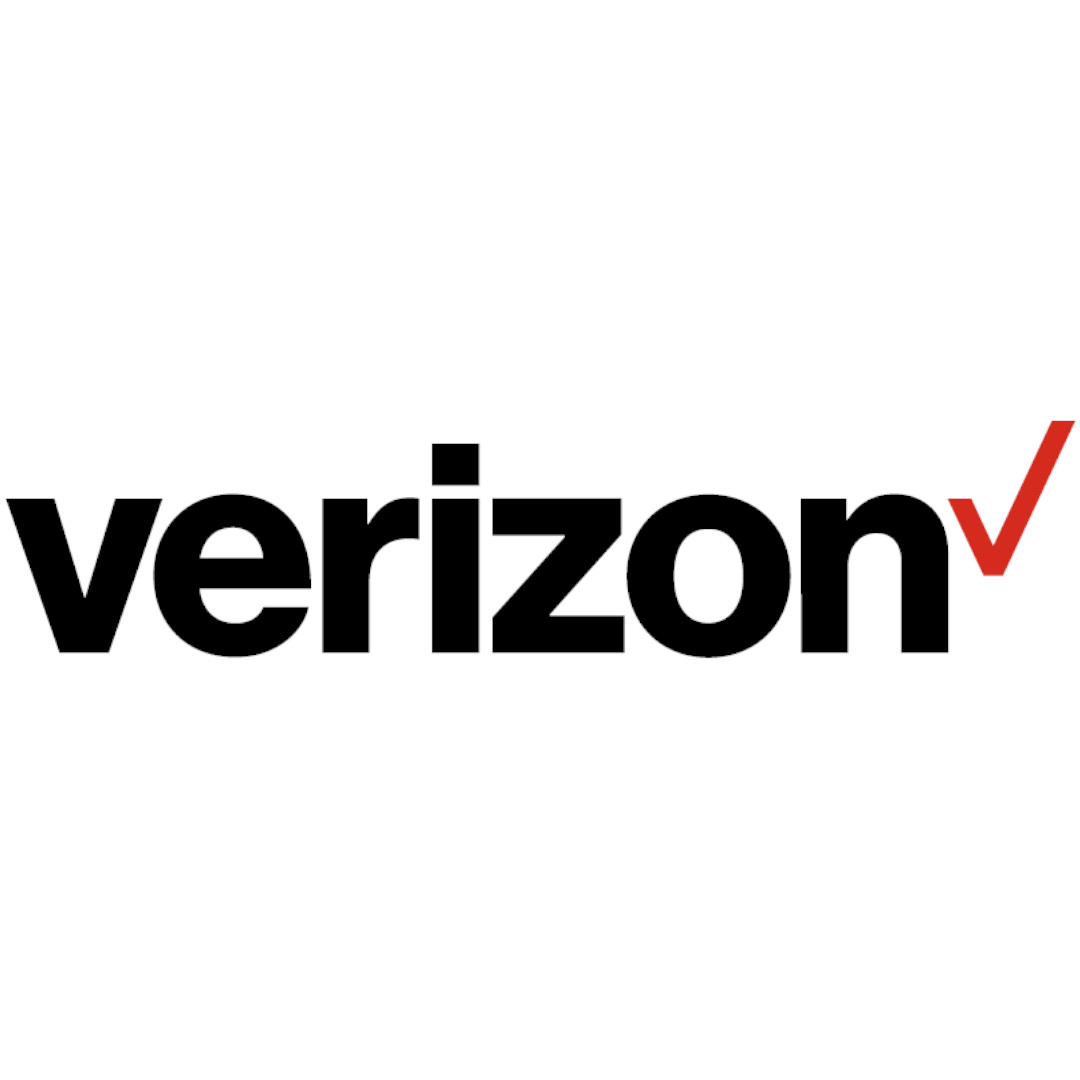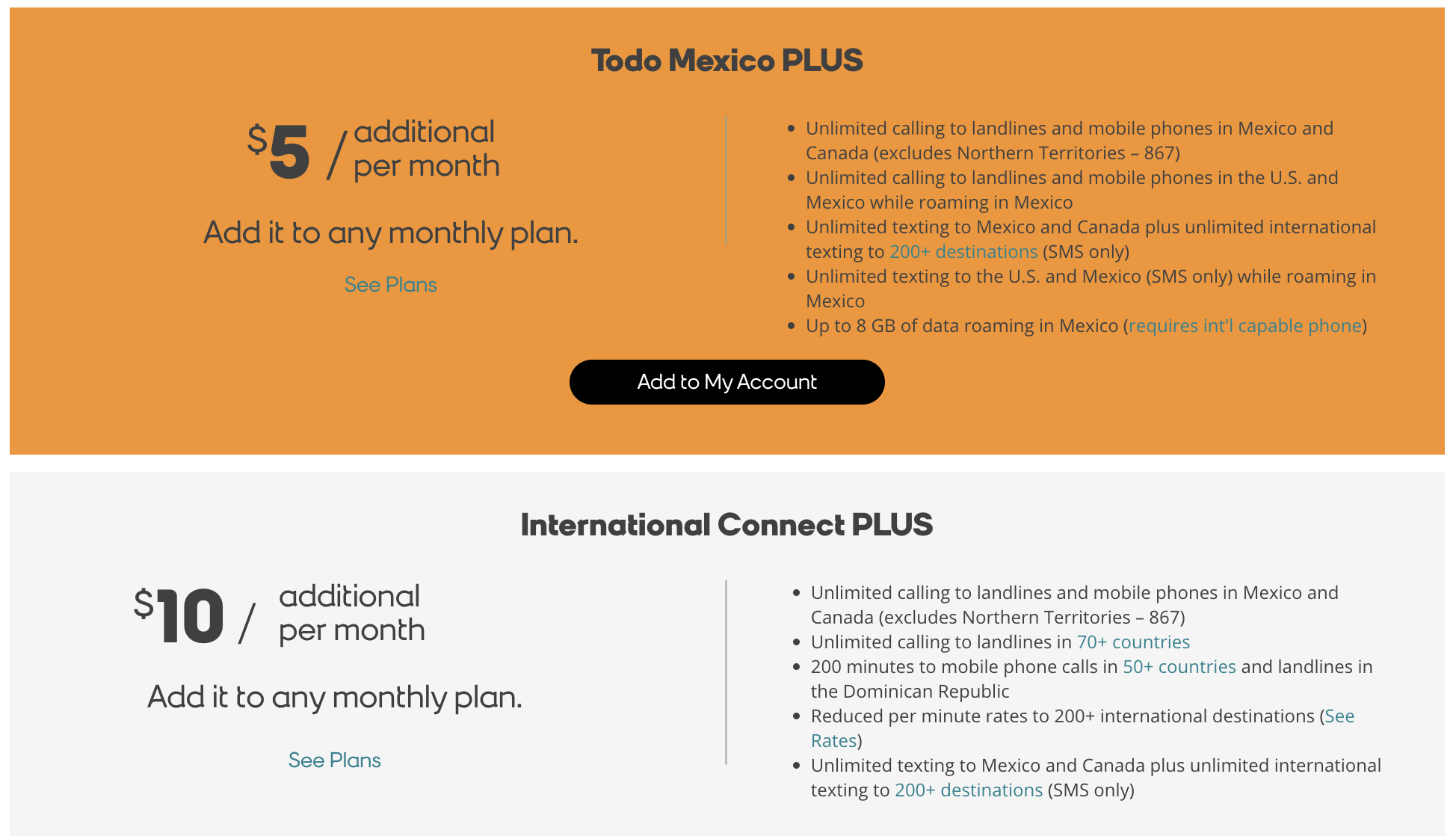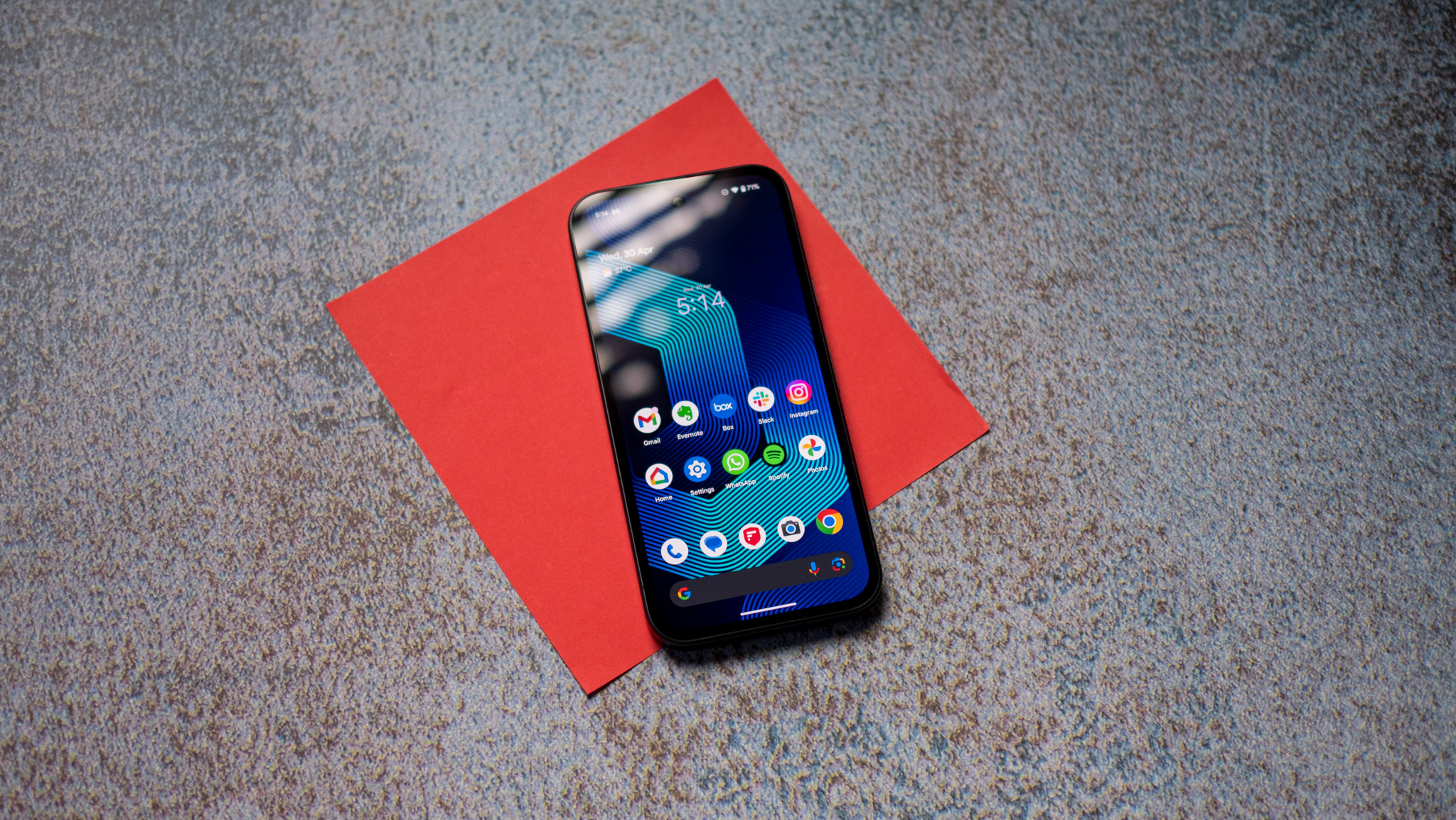Boost Mobile vs. Verizon Prepaid: Which should you subscribe to?
Boost offers a better value than Verizon Prepaid, with a wide range of plans and discounts that are immediately accessible to new customers.

Immediate savings with plenty of data
Boost Mobile's reputation for cheap data continues under DISH with the T-Mobile network making up the majority of its coverage. Boost Mobile has a wide range of data options, with multi-month savings and international add-ons available.
Pros
- Large and fast T-Mobile 5G network
- Multi-month savings available
- Good international add-ons
- Mobile hotspot on all plans
Cons
- Not all plans work with multi-month discounts
- Confusing multi-line discounts

Loyalty savings on unlimited data
For users that need more than 35GB, there's no contest with Verizon Prepaid's Unlimited options getting rid of high-speed data caps. Verizon also has loyalty and auto-pay discounts to make the prices more competitive.
Pros
- Vast Verizon LTE and 5G coverage
- Loyalty savings on most plans
- Unlimited plans include data in Mexico and Canada
Cons
- Ultra Wideband limited to one plan
- More expensive plans
With Boost Mobile adopting the T-Mobile LTE and 5G network for the majority of its coverage, the carrier is much easier to recommend. T-Mobile's network provides strong compatibility with a wide range of phones, and has the largest and fastest 5G coverage area of any carrier. Along with sensible prices and plans, most people can find a Boost Mobile plan that fits their needs.
Verizon prepaid still has a lot to offer with a truly unlimited plan, growing mid-band 5G coverage, and loyalty discounts that make the plans much more competitive. Verizon also tends to have stronger rural coverage than T-Mobile. If you're willing to stick around to make the most of Verizon's discounts, there's a lot of value in its prepaid plans, especially for heavy users.
Boost Mobile vs. Verizon Prepaid: What kind of discounts work for you?
Boost Mobile's plan discounts mainly come from buying multiple months upfront, with a few of its plans being eligible for 3-month, 6-month, or 12-month discounts. While this leads to a higher initial cost, the price per month works out to be quite a bit lower than many other carriers.
That being said, it can be a bit confusing to get the exact plan you want. This is due to Boost not simply offering the three multi-month terms on every plan, as we saw in our Mint Mobile review, but limiting the option to only a few plans. Boost's 1GB plan, as an example, is only available for 12 months at a time.
Verizon Prepaid has two main discounts in its loyalty program and auto-pay discounts. Auto-pay gets you $5 off your plan, while the loyalty program gives you $5 off after three months. After nine months, you get $10 off your bill. If you stick with Verizon Prepaid for a while, you can get some good rates, but it does make switching down the road a harder decision. For prepaid customers, the more immediate savings with Boost may work out to be a better deal.
| Header Cell - Column 0 | Verizon Prepaid | Boost Mobile |
|---|---|---|
| Network | Verizon | T-Mobile |
| Hotspot | Limited data plans | All plans |
| International roaming | Available | Mexico with add-on |
| 5G nationwide | All plans | All plans |
| 5G mid-band/mmWave | Unlimited Plus | All Plans |
Boost Mobile vs. Verizon Prepaid: Get the right coverage
A few years ago, Verizon would have scored an easy victory when it comes to coverage, but T-Mobile has made up a ton of ground in most urban and suburban areas, delivering comparable performance to Verizon. If you include 5G, though, T-Mobile pulls well ahead with mid-band coverage reaching 235 million people covered by mid-band 5G. The vast majority of the rest of its customers are covered by low-band 5G.
Verizon isn't sleeping on 5G, and has been catching up to T-Mobile, but is far enough behind that T-Mobile will still be well in the lead when you reach Verizon Prepaid's max loyalty discount tier.
Get the latest news from Android Central, your trusted companion in the world of Android
Even so, Verizon's LTE coverage is still plenty strong for most people, so if you don't need a ton of speed or haven't gotten around to upgrading to one of the best Android phones with 5G, you should get plenty of speed on either carrier.
Boost Mobile vs. Verizon Prepaid: Verizon Prepaid plans
Verizon Prepaid has five plans starting with a talk and text plan for $35 per month. While this plan does qualify for auto-pay discounts, loyalty discounts are unavailable. Even with auto-pay, this is one of the most expensive basic plans on any carrier.
The 5GB and 15GB are straightforward with unlimited talk and text, mobile hotspot usage, and access to nationwide 5G. The 15GB plan and all plans above it come with talk and text to Mexico and Canada.
The cheaper unlimited plan comes with no hotspot data, though 10GB can be added for $5 per month. Coverage outside of the U.S. is also included with these, with unlimited service in Mexico, Canada, Puerto Rico, and the U.S. Virgin Islands. The Unlimited Plus plan adds the hotspot data back in, as well as 5G Ultra Wideband.
5G Ultra Wideband is what Verizon calls 5G coverage using mid-band spectrum like C-band and high-band spectrum like mmWave. Ultra Wideband has higher capacity and speeds, so it makes sense to offer it to as many customers as possible, but Verizon puts it behind a paywall. Boost Mobile's T-Mobile 5G on the other hand has all bands available for all plans.
| Header Cell - Column 0 | Talk and text only | 5GB | 15GB | Unlimited | Unlimited Plus |
|---|---|---|---|---|---|
| Talk and text | Unlimited | Unlimited | Unlimited | Unlimited | Unlimited |
| High-speed data | None | 5GB | 15GB | Unlimited | Unlimited |
| Hotspot | None | Shared | Shared | $5 for 10GB | Unlimited (5G Ultra Wideband) 10GB (4G LTE and 5G Nationwide) |
| Calls to Mexico and Canada | $5 | $5 | Included | Included | Included |
| Usage in Mexico and Canada | $5/day | $5/day | $5/day | Included | Included |
| Price | $30 with auto pay | $35 with auto pay | $45 with auto pay | $60 with auto pay | $70 with auto pay |
| Price after 3 months | $30 with auto pay | $30 with auto pay | $40 with auto pay | $55 with auto pay | $65 with auto pay |
| Price after 9 months | $30 with auto pay | $25 with auto pay | $35 with auto pay | $50 with auto pay | $60 with auto pay |
Boost Mobile vs. Verizon Prepaid: Boost Mobile plans
All Boost Mobile plans come with unlimited talk and text so you only need to focus on the data. The smallest plan with 1GB of data is only available as a 12-month plan and includes mobile hotspot. The 2GB plan is available monthly while the 5GB plan is available in all lengths.
There are two unlimited options and the main difference is the amount of hotspot data you get with the cheaper plan getting 12GB and the more expensive plan getting 30GB. The larger plan also includes the Todo Mexico add-on. These plans also feature reduced rates for additional lines.
| Header Cell - Column 0 | Monthly | 3 months | 12 months |
|---|---|---|---|
| 1GB | ❌ | ❌ | $100 |
| 2GB | $15 | ❌ | ❌ |
| 5GB | $25 | $45 | $168 |
| 15GB | ❌ | ❌ | $240 |
| Unlimited | $50 | $90 | $300 |
| Unlimited Plus | $60 | ❌ | ❌ |
One of Boost Mobile's strongest features is its add-ons. While there is a range of features such as family tracking and even telemedicine service, the most interesting add-ons focus on international usage.
Todo Mexico Plus comes with unlimited calls to Mexico, including landline as well as usage in Mexico. You get 8GB of high-speed data in Mexico, making it a great add-on for someone that travels to the country often. At $5 per month, it's a bargain if you need it. The International Connect Plus add-on includes calling to many more international locations.
Boost Mobile vs. Verizon Prepaid: Which phone can I use?
Both carriers sell a wide range of Androids and iPhones, whether you're looking for something cheap, or want a premium flagship phone. Keep in mind that phones will need to be purchased at their full prices, rather than on a payment plan like postpaid Verizon.
If you're ready for a new phone, but can't afford a flagship phone, one of the best cheap Android phones may be a better option. If you're looking for a payment plan, you can get something like the Galaxy S22 directly from Samsung with some payment plan options.
If you like your current phone and have paid it off, there's a good chance you'll be able to bring it to either carrier. Most phones from the past couple of years will support at least some of these carriers' bands. For the best results on Boost, you'll want a 5G phone with bands n41 and n71.
Boost Mobile vs. Verizon Prepaid: Which works for you?
Overall, Boost Mobile is cheaper and has smaller data plans for light users. While Verizon Prepaid's loyalty discounts help make it more competitive, the fact of the matter is that it takes months to see these benefits. Verizon Prepaid's auto-pay discount could also be problematic to those on a tight budget.
Heavier users will get more data with Verizon Prepaid's unlimited plans but for most people, the extra cost won't be worth it. On top of that, the fact that Verizon locks its best 5G behind the most expensive plan makes Boost look a lot better, especially if you're looking to make the most of a new 5G phone.

When Samuel is not writing about networking or 5G at Android Central, he spends most of his time researching computer components and obsessing over what CPU goes into the ultimate Windows 98 computer. It's the Pentium 3.

